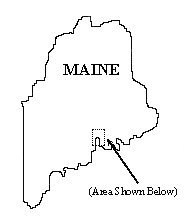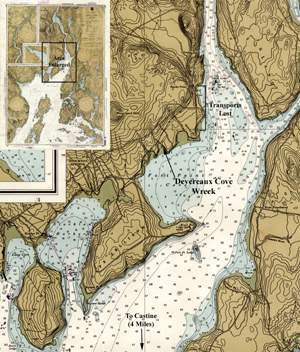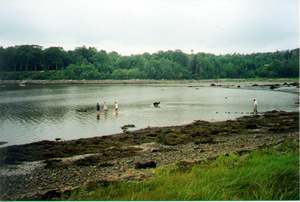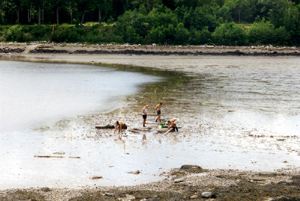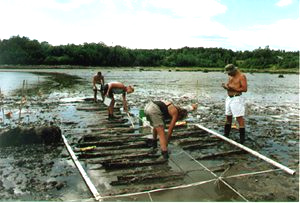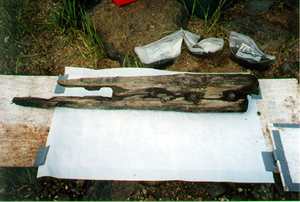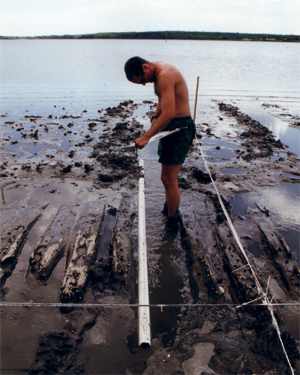
Mapping the Devereaux Cove Wrecks's floors and first
futtocks (the bottom most frame timbers). |
Notably, the shoreward portion of the vessel is considerably less
intact than the open water side, suggesting that the wreck initially listed toward open
water, leaving shoreward frames more exposed to the elements and tide. Extant outer hull planking on the vessel’s
shoreward side, now free of frame timbers, suggests that when the wreck came to rest in
Devereaux Cove, more frame timbers were present.
The wrecking event, contemporary salvage, and modern artifact
collecting must also be considered for their impact on the site formation process. If the Devereaux Cove vessel is a Penobscot
Expedition transport, run aground and burned to prevent capture, it likely burned well
below the waterline after the tide ran out. Moreover,
should the remains at Devereaux Cove be the carcass of a transport burned at a nearby
location only to drift to the present site, that process too would have further
compromised the wreck’s structure. Like
other beached expedition transports, the Devereaux Cove vessel likely represented a
windfall of iron, and depending on the extent of its initial destruction, building timber
for local inhabitants. That locals may even
have re-burned the wreck to claim every valuable iron fastener, is not inconceivable. Finally, because of the wreck’s close
proximity to shore, modern human impact on the site, in the form of souvenir hunting or
mere curiosity, likely ensured the loss of easily portable timbers, planks, or artifacts. Clearly, much of the vessel has been lost via all,
or a combination of, the environmental and human impacts described above. It should be noted, however, that anaerobic
conditions well below the mud line appear to have slowed deterioration of some buried hull
structure. Learn more about
the Devereaux Cove and what archaeologists found (PDF file). |
